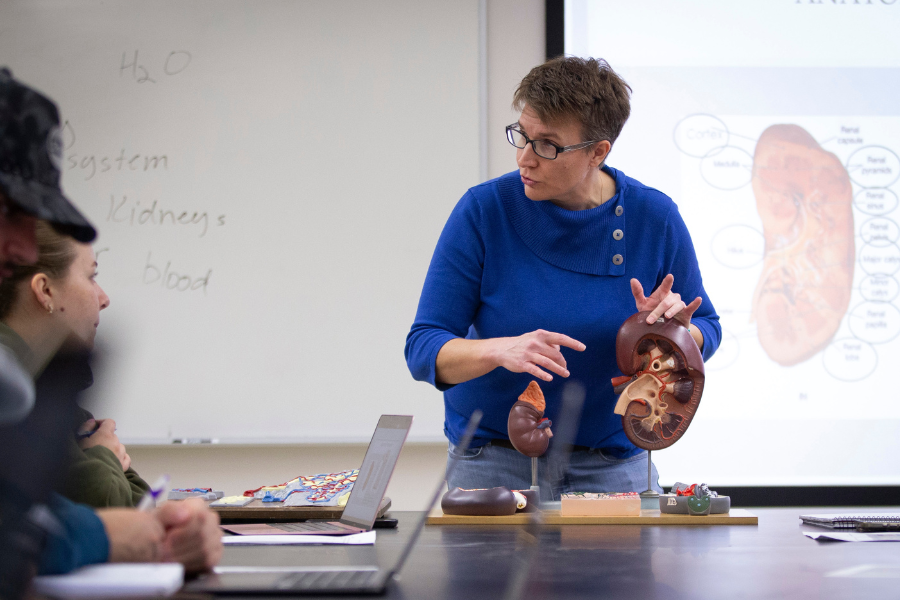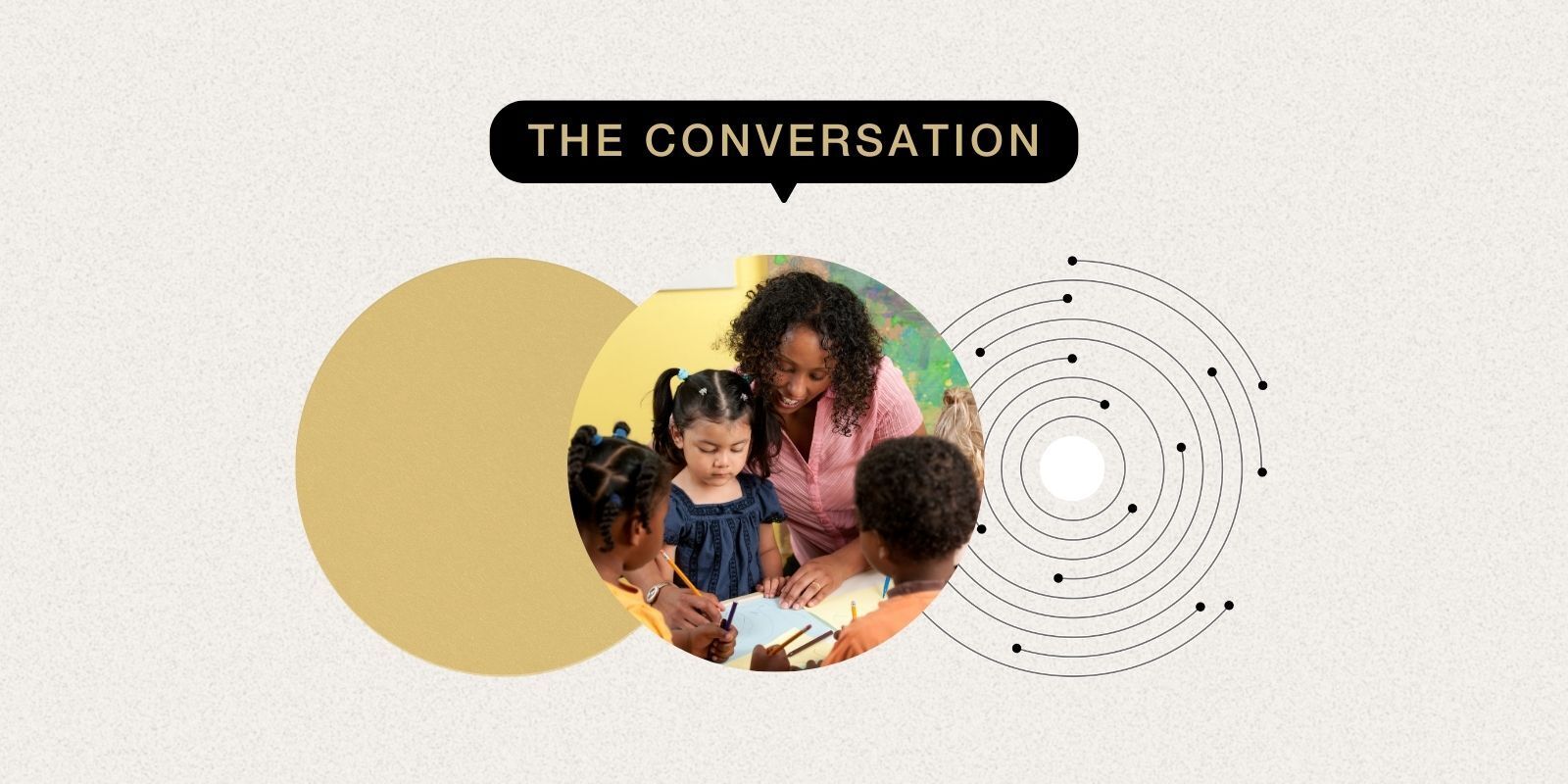Sinclair plans $30M center to train students in AI, cybersecurity, and IT – WYSO

Report on Sinclair Community College’s Integrated Technology Education Center Initiative
Introduction: A Strategic Investment in Sustainable Development
Sinclair Community College has announced a $30 million investment to establish an Integrated Technology Education Center. This initiative directly supports several United Nations Sustainable Development Goals (SDGs) by transforming an underutilized campus building into a state-of-the-art technology hub. The project is designed to prepare students for an AI-driven economy, addressing critical workforce needs and fostering regional economic growth, thereby aligning with SDG 4 (Quality Education), SDG 8 (Decent Work and Economic Growth), and SDG 9 (Industry, Innovation, and Infrastructure).
Project Scope and Implementation
Facility Modernization and Capacity
The project involves a complete renovation and modernization of the campus’s Building 8. Key details include:
- Total Investment: $30 million, sourced from the college’s financial reserves.
- Physical Space: A 36,000-square-foot facility, expanded with a new 10,000- to 15,000-square-foot mezzanine.
- Student Impact: The center is projected to serve over 7,500 students annually, a significant increase from the few hundred currently using the space.
- Timeline: The anticipated opening is scheduled for the spring of 2027.
Alignment with Sustainable Development Goals (SDGs)
SDG 4: Quality Education
The initiative is a direct investment in providing inclusive and equitable quality education and promoting lifelong learning opportunities. It aims to equip students with relevant skills for future employment.
- Future-Focused Curriculum: The center will offer credentials and learning environments focused on high-demand careers in IT, cybersecurity, and artificial intelligence.
- Skill Development: It addresses the need for a workforce where technological literacy is a fundamental, not optional, skill.
- Responsive Education: As stated by Melissa Tolle, Senior Vice President at Sinclair, the investment represents a strategy to “reimagine technology and curriculum, ensuring we remain responsive and connected to the needs of our students and our employers.”
SDG 8: Decent Work and Economic Growth
By tackling regional workforce challenges, the center promotes full and productive employment and decent work for all.
- Addressing Workforce Gaps: The project is a response to the “unprecedented workforce challenges” in the Dayton region and Ohio, aiming to fill hundreds of thousands of job opportunities.
- Employer Collaboration: The curriculum was developed in partnership with the Employers’ Workforce Coalition and other local employers to ensure graduates are prepared for real-world job demands.
- Economic Resilience: The initiative prepares students to work alongside AI rather than be displaced by it, fostering a resilient and adaptable workforce.
SDG 9: Industry, Innovation, and Infrastructure
The project enhances technological capabilities and builds resilient infrastructure, fostering innovation.
- Sustainable Infrastructure: The renovation of an underutilized building represents a sustainable approach to infrastructure development, upgrading existing assets rather than constructing new ones. This aligns with SDG 11 (Sustainable Cities and Communities).
- Fostering Innovation: The center’s focus on artificial intelligence and quantum computing positions it as a hub for technological advancement and innovation in the region.
- Partnerships for the Goals (SDG 17): The collaboration between Sinclair Community College, local employers, and government bodies exemplifies a multi-stakeholder partnership essential for achieving sustainable development.
Strategic Vision and Future Outlook
The Integrated Technology Education Center is framed as a strategic response to inevitable technological transformation. Officials emphasize that the goal is to empower the future workforce with the skills necessary to thrive in an economy where technology is increasingly integrated. The college’s debt-free, “pay-as-we-go” financial model enabled this significant investment, ensuring its long-term fiscal sustainability while contributing to the region’s educational and economic future.
Sustainable Development Goals (SDGs) Analysis
SDG 4: Quality Education
This goal is central to the article, which focuses on Sinclair Community College’s initiative to enhance its educational offerings. The project aims to provide students with skills relevant to the modern, technology-driven economy.
SDG 8: Decent Work and Economic Growth
The article directly links the educational initiative to economic needs, stating it is a response to “unprecedented workforce challenges” and is designed to prepare students for “high-demand careers,” thereby promoting productive employment and economic growth in the Dayton region.
SDG 9: Industry, Innovation, and Infrastructure
The project involves a significant infrastructure investment of $30 million to transform an underused building into a modern “Integrated Technology Education Center.” This fosters innovation by creating a hub for learning about AI, cybersecurity, and IT, which are key drivers of modern industry.
SDG 17: Partnerships for the Goals
The article highlights that the new center was “developed in collaboration with employers across Dayton” and mentions the “Employers’ Workforce Coalition.” This demonstrates a public-private partnership aimed at achieving educational and economic goals.
Specific SDG Targets
Targets under SDG 4: Quality Education
- Target 4.4: By 2030, substantially increase the number of youth and adults who have relevant skills, including technical and vocational skills, for employment, decent jobs and entrepreneurship.
- The article explains the center’s purpose is to prepare students for “AI-driven workplaces” by offering credentials in “IT, cybersecurity, and AI,” which are described as “fundamental skills” for the future workforce.
- Target 4.3: By 2030, ensure equal access for all women and men to affordable and quality technical, vocational and tertiary education, including university.
- As a community college, Sinclair provides accessible tertiary education. The new center will expand this access, planning to “serve more than 7,500 students annually” in a high-tech field.
Targets under SDG 8: Decent Work and Economic Growth
- Target 8.6: By 2020, substantially reduce the proportion of youth not in employment, education or training.
- While the target date has passed, the initiative’s goal aligns with its spirit. By equipping students with skills for “high-demand careers,” the college aims to address “workforce challenges” and ensure its graduates are prepared for employment.
Targets under SDG 9: Industry, Innovation, and Infrastructure
- Target 9.1: Develop quality, reliable, sustainable and resilient infrastructure… to support economic development and human well-being.
- The $30 million investment to create a “36,000-square-foot facility” by renovating and modernizing an existing building is a direct investment in quality educational infrastructure designed to support the region’s economic development.
Targets under SDG 17: Partnerships for the Goals
- Target 17.17: Encourage and promote effective public, public-private and civil society partnerships.
- The article explicitly states the center was “developed in collaboration with employers across Dayton” and quotes a representative from the “Employers’ Workforce Coalition,” showcasing a partnership between an educational institution and the private sector.
Indicators for Measuring Progress
Indicators for SDG 4 Targets
- Implied Indicator for Target 4.4: The number of students served and receiving credentials. The article states the center is “anticipated to… serve more than 7,500 students annually” and will “offer credentials.”
Indicators for SDG 8 Targets
- Implied Indicator for Target 8.6: The employment rate of graduates from the new center in high-demand technology fields. The entire initiative is framed as a solution to “workforce challenges.”
Indicators for SDG 9 Targets
- Mentioned Indicator for Target 9.1: Financial investment in infrastructure. The article specifies a “$30 million” investment from the college’s reserves.
- Mentioned Indicator for Target 9.1: Increase in capacity of the facility. The article notes the building is currently “used by only a few hundred students every year” and will be transformed to serve “more than 7,500 students annually.”
Indicators for SDG 17 Targets
- Implied Indicator for Target 17.17: The number of employers and industry groups involved in the curriculum development and collaboration. The article mentions the “Employers’ Workforce Coalition” and collaboration with “employers across Dayton.”
Summary Table of SDGs, Targets, and Indicators
| SDGs | Targets | Indicators (Mentioned or Implied) |
|---|---|---|
| SDG 4: Quality Education | 4.4: Increase the number of youth and adults with relevant technical and vocational skills for employment. | Number of students served annually (mentioned as 7,500) and number of credentials offered in IT, cybersecurity, and AI. |
| SDG 8: Decent Work and Economic Growth | 8.6: Reduce the proportion of youth not in employment, education or training. | Employment rate of graduates in high-demand careers (implied as a key outcome of addressing “workforce challenges”). |
| SDG 9: Industry, Innovation, and Infrastructure | 9.1: Develop quality, reliable, sustainable and resilient infrastructure. | Total financial investment (mentioned as $30 million) and increase in student capacity (from a few hundred to 7,500 annually). |
| SDG 17: Partnerships for the Goals | 17.17: Encourage and promote effective public-private partnerships. | Number of collaborating employers and industry groups (implied by the mention of “collaboration with employers across Dayton” and the “Employers’ Workforce Coalition”). |
Source: wyso.org
What is Your Reaction?
 Like
0
Like
0
 Dislike
0
Dislike
0
 Love
0
Love
0
 Funny
0
Funny
0
 Angry
0
Angry
0
 Sad
0
Sad
0
 Wow
0
Wow
0



















































.jpg.webp?itok=0ZsAnae9#)
























